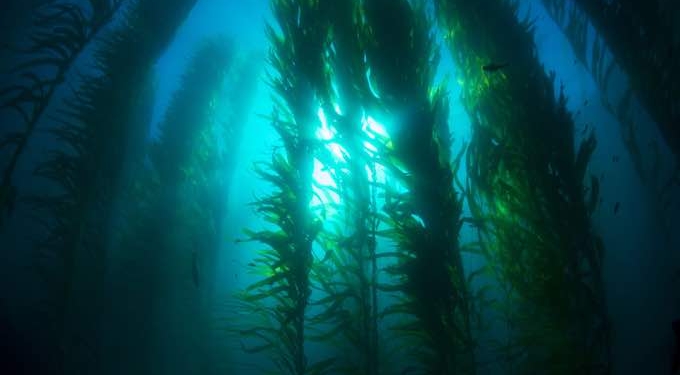
Seaweed has been a central ingredient of Japanese cuisine since prehistoric times. Japan harvests 21 species of seaweed, such as hijiki from the crevices of rocks by the sea, and kombu from the shallow waters off the coastline. Nori is perhaps the most familiar seaweed to people outside of Japan, as it is used to make sushi rolls. And, Wakame is one of the most commonly consumed types of seaweed in Japan, with its mild, sweet flavor.
Seaweed has also been used for sustenance in China, Korea, Australia, New Zealand, and Hawaii for thousands of years.
Regulations for gathering dulse (Palmaria palmata), a red seaweed, are mentioned in Icelandic sagas of the 10th century. This edible seaweed has been also used in Ireland and Scotland for many hundreds of years.
Below are some additional interesting facts about seaweed:
- Marine species, including seaweed, produce as much as 70-80 percent of the oxygen in the Earth's atmosphere.
- Seaweed can be as small as a one-celled phytoplankton or larger than 100 feet long.
- Unlike land-based foods, seaweed doesn't need roots or a system for transporting water and nutrients.
- Seaweeds are amongst the fastest growing organisms on the planet. For example, the giant kelp Macrocystis pyrifera, can grow as much as three feet a day.
- There are nine times more seaweed and microscopic algae (called phytoplankton) in the oceans than there are plants on land.
- Seaweed and microscopic algae form the basis of the food chain in the oceans.
- While most seaweeds are soft, a large number of red seaweeds are hard like a rock.
- The protein present in specific seaweeds, for instance, spirulina and chlorella, contain most of the required amino acids.
- Kelp contains small proportions of vitamins A, C, E and K, folate, zinc, sodium, calcium and magnesium.
- Dried green and purple kelp contain significant amounts of vitamin B12. One study found 2.4 mcg or 100% of the RDI of B12 in only 4 grams of Nori kelp.
- Seaweed is one of nature's true superfoods! It's one of the most nutritionally dense plants and is also one of the most abundant sources of minerals on the planet.










